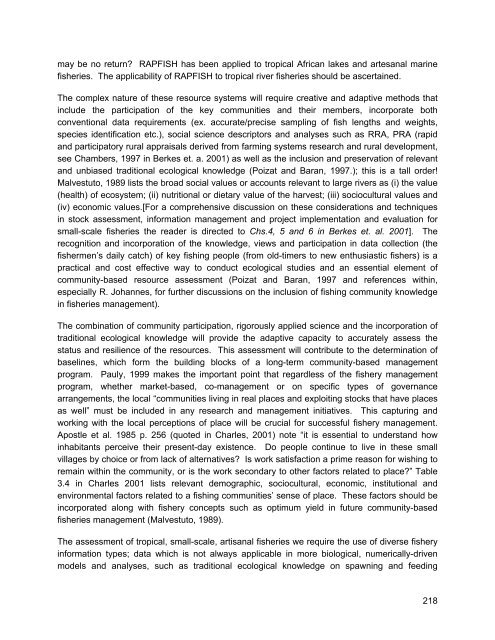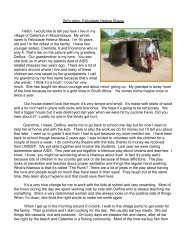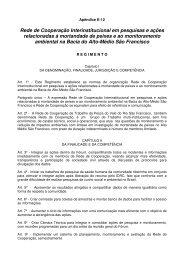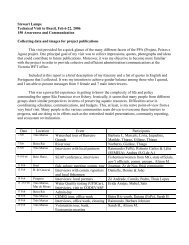Semi-annual II English - World Fisheries Trust
Semi-annual II English - World Fisheries Trust
Semi-annual II English - World Fisheries Trust
You also want an ePaper? Increase the reach of your titles
YUMPU automatically turns print PDFs into web optimized ePapers that Google loves.
may be no return? RAPFISH has been applied to tropical African lakes and artesanal marine<br />
fisheries. The applicability of RAPFISH to tropical river fisheries should be ascertained.<br />
The complex nature of these resource systems will require creative and adaptive methods that<br />
include the participation of the key communities and their members, incorporate both<br />
conventional data requirements (ex. accurate/precise sampling of fish lengths and weights,<br />
species identification etc.), social science descriptors and analyses such as RRA, PRA (rapid<br />
and participatory rural appraisals derived from farming systems research and rural development,<br />
see Chambers, 1997 in Berkes et. a. 2001) as well as the inclusion and preservation of relevant<br />
and unbiased traditional ecological knowledge (Poizat and Baran, 1997.); this is a tall order!<br />
Malvestuto, 1989 lists the broad social values or accounts relevant to large rivers as (i) the value<br />
(health) of ecosystem; (ii) nutritional or dietary value of the harvest; (iii) sociocultural values and<br />
(iv) economic values.[For a comprehensive discussion on these considerations and techniques<br />
in stock assessment, information management and project implementation and evaluation for<br />
small-scale fisheries the reader is directed to Chs.4, 5 and 6 in Berkes et. al. 2001]. The<br />
recognition and incorporation of the knowledge, views and participation in data collection (the<br />
fishermen’s daily catch) of key fishing people (from old-timers to new enthusiastic fishers) is a<br />
practical and cost effective way to conduct ecological studies and an essential element of<br />
community-based resource assessment (Poizat and Baran, 1997 and references within,<br />
especially R. Johannes, for further discussions on the inclusion of fishing community knowledge<br />
in fisheries management).<br />
The combination of community participation, rigorously applied science and the incorporation of<br />
traditional ecological knowledge will provide the adaptive capacity to accurately assess the<br />
status and resilience of the resources. This assessment will contribute to the determination of<br />
baselines, which form the building blocks of a long-term community-based management<br />
program. Pauly, 1999 makes the important point that regardless of the fishery management<br />
program, whether market-based, co-management or on specific types of governance<br />
arrangements, the local “communities living in real places and exploiting stocks that have places<br />
as well” must be included in any research and management initiatives. This capturing and<br />
working with the local perceptions of place will be crucial for successful fishery management.<br />
Apostle et al. 1985 p. 256 (quoted in Charles, 2001) note “it is essential to understand how<br />
inhabitants perceive their present-day existence. Do people continue to live in these small<br />
villages by choice or from lack of alternatives? Is work satisfaction a prime reason for wishing to<br />
remain within the community, or is the work secondary to other factors related to place?” Table<br />
3.4 in Charles 2001 lists relevant demographic, sociocultural, economic, institutional and<br />
environmental factors related to a fishing communities’ sense of place. These factors should be<br />
incorporated along with fishery concepts such as optimum yield in future community-based<br />
fisheries management (Malvestuto, 1989).<br />
The assessment of tropical, small-scale, artisanal fisheries we require the use of diverse fishery<br />
information types; data which is not always applicable in more biological, numerically-driven<br />
models and analyses, such as traditional ecological knowledge on spawning and feeding<br />
218





